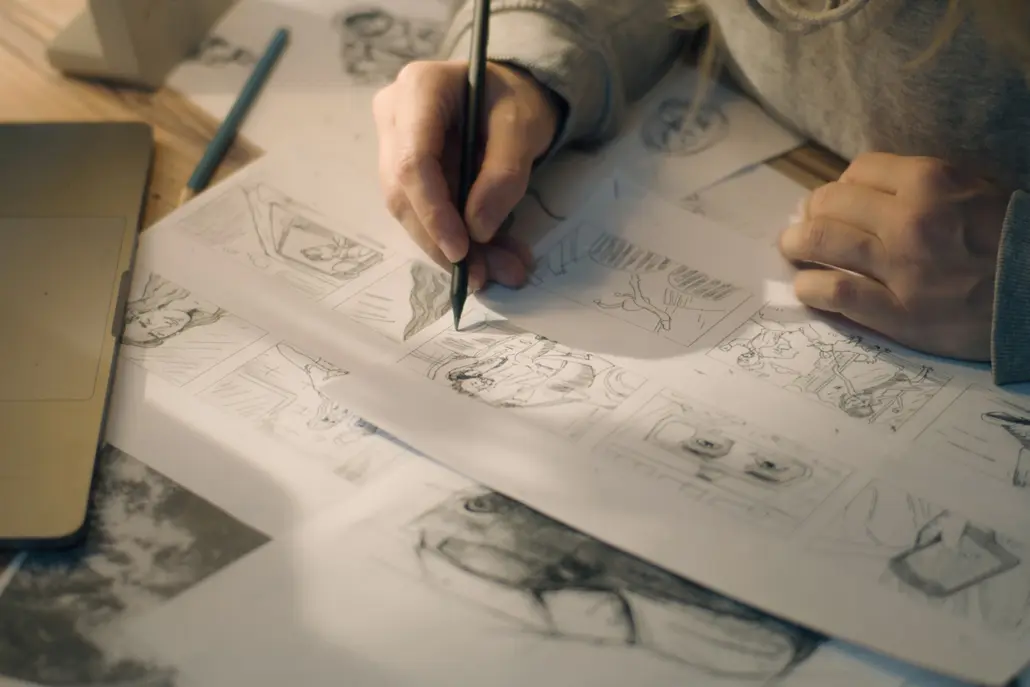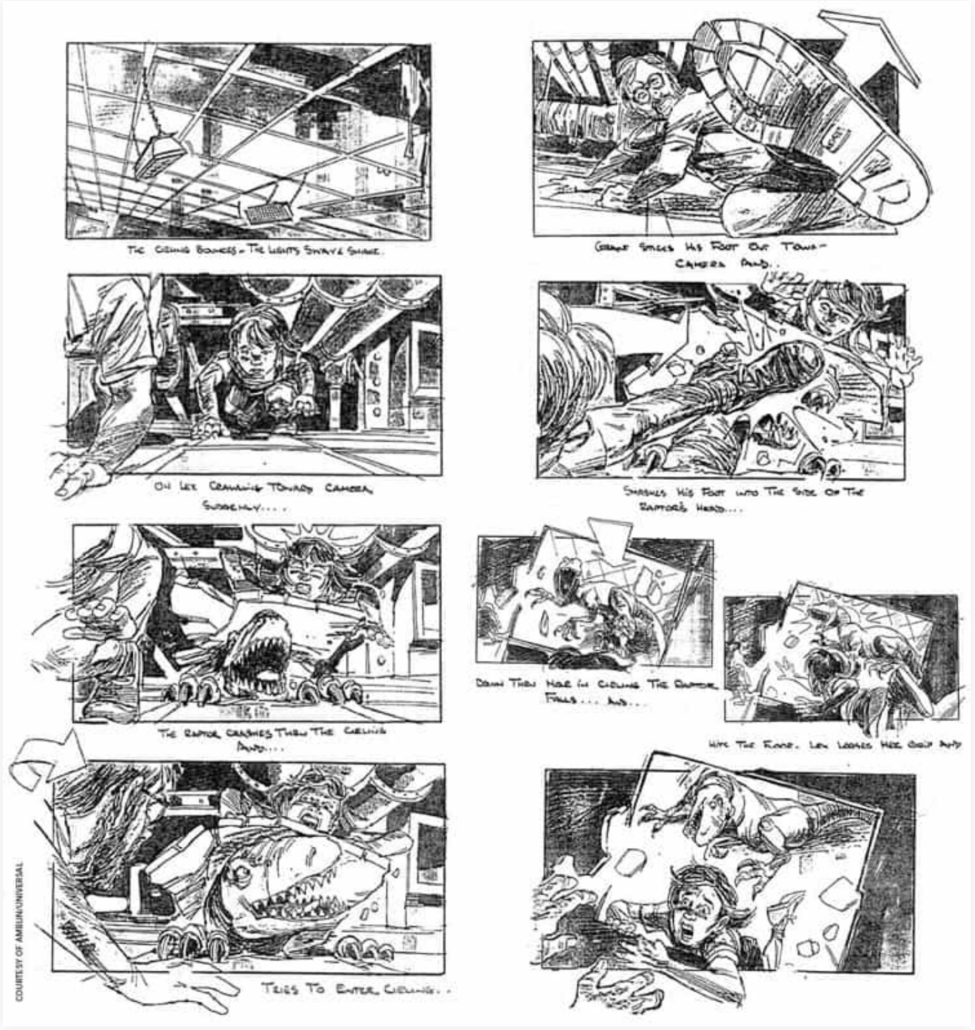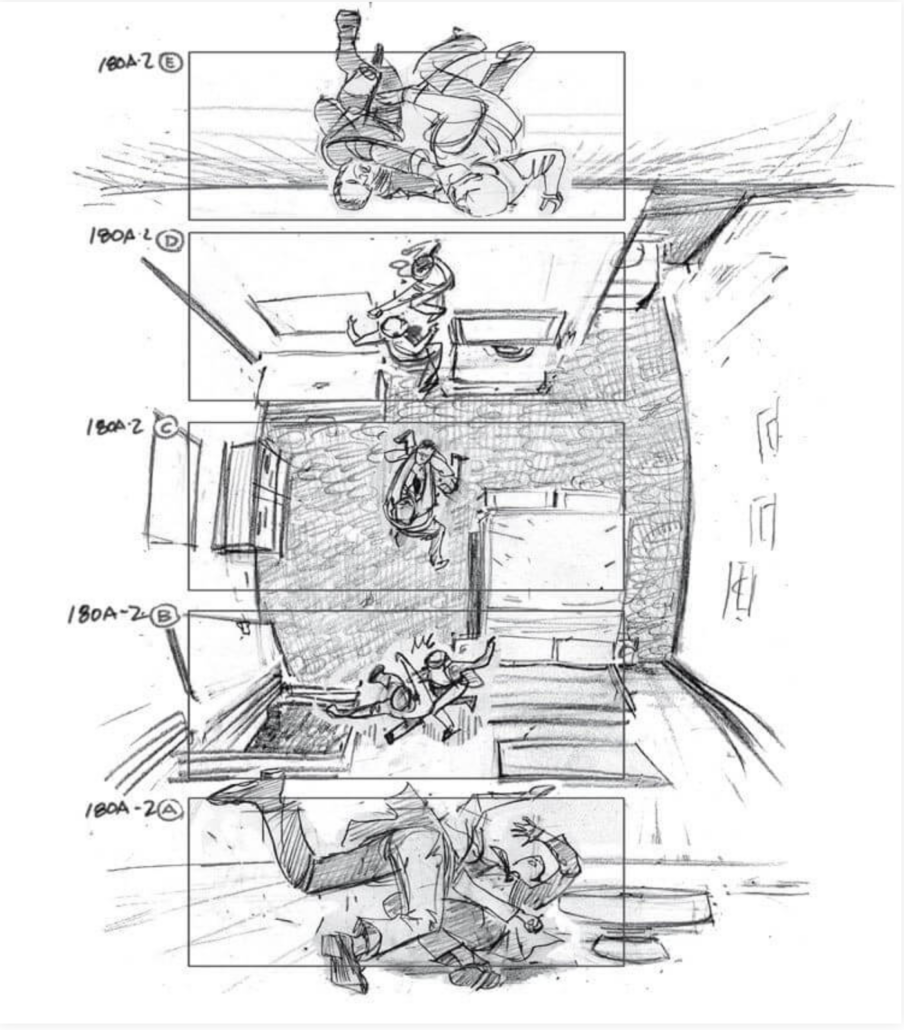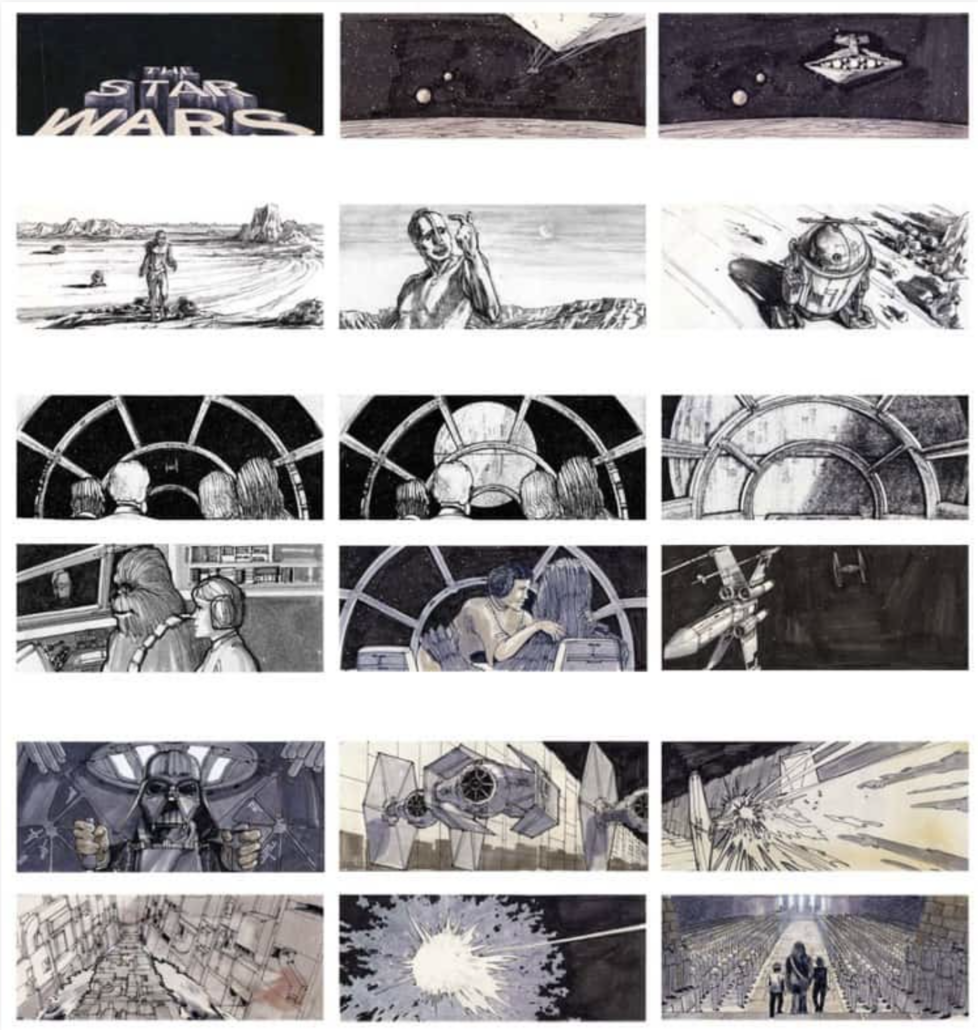Storyboarding 101: Breathing Life Into Your Vision

Storyboarding is where imagination meets structure.
It’s that crucial step that takes a creative idea and turns it into something real. Before the cameras start rolling, the code starts running or the first animation frame is drawn, there’s always a plan—a storyboard.
No matter what creative path you’re on, a storyboard is your go-to tool for making sure your vision unfolds just the way you see it in your head.
So, let’s break it down.
We’re diving into the process and techniques of storyboarding to explore why it’s such an essential part of the production puzzle—and how you can use it to turn your big ideas into reality.
What is Storyboarding?
At its core, storyboarding is a visual representation of a film or project, sketched scene by scene.
Think of it as a comic strip, but for your production, where each frame conveys a critical moment in the story. For directors, animators and digital creators alike, storyboards provide clarity, structure and a guide for what the final product will look like.
Whether it’s live action or animation, storyboarding is the ultimate storytelling tool.
Why is Storyboarding Important?
Storyboarding is like having a road map before embarking on a long journey.
Here’s why it’s so crucial:
- Visualizes the vision
It allows you and your team to see the film before it’s made, identifying pacing, timing and flow issues before any costly production. - Aligns the crew
A storyboard ensures that everyone on the production team—camera operators, designers, animators and even actors—knows exactly what’s expected from each scene. - Saves time and resources
By identifying potential problems early, storyboarding helps avoid miscommunication, reshoots and reworks. - Ramps up creativity
Working within the confines of a storyboard can spark creative solutions, as you will find yourself thinking visually about how to convey key moments.
The Storyboarding Process: From Concept to Creation
1. Script Breakdown
The process begins with breaking down the script. You’ll identify key scenes, actions and emotional beats.
You want to highlight the most important narrative moments to include in the storyboard. This step is vital for films, games and digital projects alike—each scene must serve the overall story, so prioritizing which ones to visualize ensures a cohesive narrative flow.
2. Creating Thumbnails
Next comes the creation of thumbnail sketches—small, rough drafts of the scenes. These quick, minimal sketches allow you to experiment with composition, angles and timing without getting bogged down in details. Think of it as the brainstorming phase, where nothing is set in stone but big-picture ideas are mapped out.
3. Establishing a Visual Flow
Once thumbnails are finalized, it’s time to establish a visual flow. How do the scenes transition? What kind of pacing is needed?
Storyboarding is not just about individual shots but how they come together to create a cohesive, visually engaging story. This is where you determine when to cut from wide shots to close-ups, how long to linger on a moment and what emotions need to be conveyed visually.
4. Adding Detail and Dialogue
After establishing the flow, the next step is adding detail—fleshing out character positions, camera angles and movement.
While storyboards don’t have to be artistic masterpieces, they should be clear enough that everyone on set knows what’s happening in each frame. Dialogue, key sound effects or important instructions are also included at this stage to make sure that nothing is lost in translation.
5. Review and Revise
Finally, you’ll have your creative team review your storyboard.
And remember, revisions are common as you iron out any inconsistencies and make sure the visual storytelling aligns with the intended emotional beats and pacing of the script.
Mastering Storyboarding Techniques
The art of storyboarding isn’t just about sketching scenes—it’s about knowing how to guide the viewer’s attention and build momentum through each shot.
Whether you’re creating a film, an animation or a game, these essential techniques will help you take your storyboard to the next level, so that every frame has purpose and impact.
Here are the key elements that make a storyboard truly shine:
1. Focus on Composition
Good storyboarding draws the viewer’s eye to the most important element of each frame. Composition techniques like the rule of thirds, leading lines and depth of field are essential tools for keeping the audience engaged and guiding their attention.
2. Use of Camera Angles and Movement
Great storyboards don’t just show what happens—they convey how it happens. Camera angles—from wide shots to close-ups—and the movement of the camera (pans, tilts, zooms) play a vital role in how a story is experienced. Knowing when to shift perspectives can heighten tension, create intimacy or reveal crucial information.
3. Consider Timing and Pacing
Just as important as what’s shown is how long it’s shown. Storyboards need to account for timing—how quickly one scene flows into the next. This is especially crucial in animated films or fast-paced action sequences where every millisecond counts.
4. Collaboration is Key
Storyboarding is rarely a one-person job. Successful storyboards are the result of collaboration between writers, directors and animators. It’s a team effort where feedback helps refine the vision and ensures that every shot serves the overall narrative.
Real-life examples: Bringing storyboards to life
To truly understand the power of storyboarding, let’s take a look at how some of Hollywood’s most iconic scenes started as simple sketches before being transformed into cinematic masterpieces.
1. Jurassic Park – the raptor attack scene
In Jurassic Park, the tension-filled raptor attack is one of the most unforgettable moments in film history. The storyboards by David Lowery show just how meticulously each shot was planned, with the camera tracking the terrifying movements of the velociraptors.
Multiple storyboard cells were dedicated to a single shot, allowing the filmmakers to pace the action and suspense perfectly. By pre-visualizing the chaos, the team was able to choreograph the scene with both the actors and the animatronic dinosaurs to create seamless tension.

2. Inception – the hallway fight scene
Christopher Nolan’s Inception features a mind-bending hallway fight scene where gravity shifts and the room spins.
Storyboard artist Gabriel Hardman faced the daunting task of illustrating how this disorienting scene would play out.
By keeping the room’s orientation consistent in each panel and including key visual elements like a ceiling fan, Hardman ensured the action remained clear even as the characters defied gravity.
These detailed storyboards allowed the production team to plan the complex camera movements and physical stunts involved in the rotating hallway set.

3. Star Wars: A New Hope – a galaxy far, far Away
George Lucas’ Star Wars: A New Hope brought audiences into an entirely new universe and it all started with carefully crafted storyboards.
From the opening crawl to the introduction of beloved characters like C-3PO and R2-D2, every iconic moment was pre-visualized.
Lucas used these storyboards not only to plot out the action sequences but also to define the visual tone of the film. The dramatic space shots and innovative camera angles set the stage for what would become one of the most influential films in cinematic history.
You can explore the storyboards for Star Wars here.

But storyboarding isn’t just reserved for blockbuster films.
At The Los Angeles Film School, we nurture creative talent and guide students through their own storyboarding journeys.
Check out the storyboard work by our talented student Conlee Cabellero here, to see how budding filmmakers can bring their visions to life through storyboarding.
Final thoughts
Mastering storyboarding isn’t just about sketching scenes—it’s about learning to communicate your vision clearly and efficiently.
Storyboarding helps you stay organized, think critically and ensure every frame serves your story. As a creative, mastering the art of storyboarding could be the key to bringing your wildest ideas to life.
Would you like to dive deeper into the creative process? Explore our courses at The L.A. Film School and start building your storyboard today!
